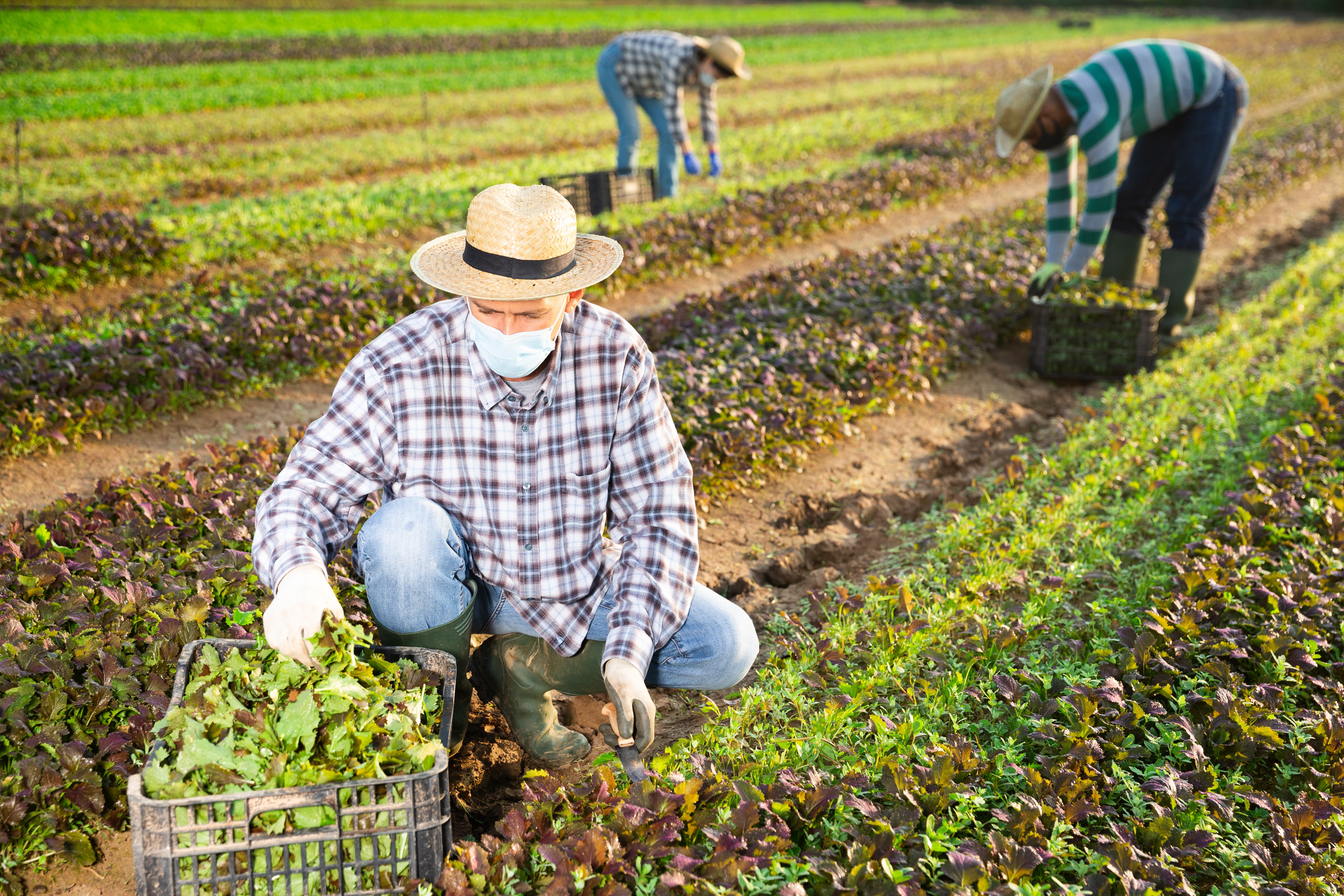The potential spread of COVID-19 is still a major concern for employers, including
farm employers. Given the delicate timing of agricultural harvest, a COVID-19 outbreak
among workers could be devastating. Despite employer precautions, there were still
numerous COVID-19 outbreaks on farms in 2020. In a forthcoming paper in the Applied Economic Perspectives & Policy, I examine the relationship between month-to-month variation in historical agricultural
employment and changes in the incidence of confirmed COVID-19 cases and deaths within
U.S. counties from April-August 2020.
I find that employment of 100 additional workers in fruit, vegetable, and horticultural
(FVH) production was associated with 4.5% more COVID-19 cases within counties or an
additional 18.65 COVID-19 cases and 0.34 additional COVID-19 deaths per 100,000 individuals
in the county workforce. I also find evidence that employees of Farm Labor Contractors
(FLCs) are positively associated with increased incidence of COVID-19 within counties.
This is an important finding since FLCs have traditionally served to help connect
farm employers to additional workers when the farm labor supply is tight. Thus, at
a time when employers face risk that workers could get sick and need to quarantine
at a moment’s notice, FLCs may not provide an adequate solution.
Regressions include controls for state-by-month fixed effects to control for changes
in state mandates and attitudes regarding social distancing, quarantine, or other
social practices. Results are also robust to extending the analysis through December
while dropping counties with large post-secondary education institutions, dropping
counties with meat packing facilities, and controlling for seasonal employment in
post-harvest crop activities (like fruit packing), construction, retail & trade, and
accommodation & food. I find no effects of month-to-month variation in employment
in more mechanized crops, including grains & oilseed, other field crops, and animals
& livestock on changes in COVID-19 incidence within counties. These findings suggest
that positive association between farm employment and COVID-19 incidence is limited
to labor-intensive FVH crops.
It is important to note that this analysis does not identify causal mechanisms. Many
factors could correlate with both changes in agricultural employment and new COVID-19
cases. For example, most seasonal farm workers are Hispanics, who also appear to be
particularly susceptible to COVID-19. Furthermore, approximately 8% of crop workers,
excluding H-2A guest workers, were follow-the-crop migrants in 2016. The migratory
nature of this work might expose workers to increased risk of contracting viruses.
Activities off the farm or dense living quarters might also help spread the virus.
Understanding the precise mechanisms of the positive relationship are beyond the scope
of this analysis.
The findings from this paper illustrate that COVID-19 is an important source of risk
for workers and employers in the food supply chain, beginning at the farm. Strategies
to reduce the spread of COVID-19 on farms and in employer-provided housing are also
costly. This may induce some employers to seek out alternative risk management strategies,
including increased use of technology and mechanical equipment to plant and harvest
crops. The long-term effects of the coronavirus pandemic on agricultural production
and food supply chains are hitherto unknown.
See other Related Articles:
Job Vacancies and the Role of Immigrants
Is H-2A Reform Possible? And What Would It Mean for Workers and Employers?
Help Wanted & H-2A
Has Montana's Labor Force Shrunk?

Diane Charlton
Associate Professor

